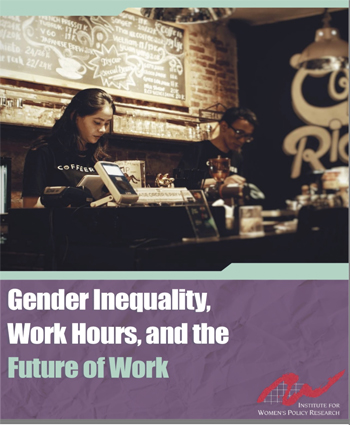Increasing workload and lack of paid time off have exacerbated gender inequality both at work and at home, according to the latest research from the Institute of Women’s Policy Research (IWPR).
It found that mothers work 300 more hours per year than they did 40 years ago (29% more hours than 1977), while fathers work about the same. The report, Gender Inequality, Work Hours, and the Future of Work, which analyses trends in paid hours worked among women and men in the US, notes that although work hours have increased, “policies have not kept pace with the shifting realities of working families”.
Overall, fathers work more hours on average than other men, while mothers work fewer paid hours than other women, in each major racial and ethnic group, the report found.
DUAL TRENDS
“While the distribution of paid work hours has become more evenly split between men and women over the last four decades, who does unpaid care has not seen a similar shift,” stated Co-author and IWPR Postdoctoral Fellow Valerie Lacarte. “This has created a double-bind on women’s and men’s limited time, reducing women’s access to the highest paid jobs because of the imbalance in family care responsibilities, while making it more difficult for men to contribute equally to care and domestic work.”
The report suggests that the ‘dual trends of overwork and lack of paid time off’ has created barriers to women’s advancement at work and exacerbated gender inequality at home. However, “technological innovation can provide opportunities to better address time inequity between women and men,” suggests the report.
“Technological innovation provides us with opportunities to rethink the way we use our time, be it to help the United States catch up to the modern world with paid leave policies or using scheduling software to increase choice over hours worked,” explained Co-author and IWPR Programme Director on Employment & Earnings Ariane Hegewisch. “During the last 40 years, the daily reality for American families has changed and it is time for policies to catch up.”
ADDITIONAL FINDINGS
The average woman working full-time now works five more weeks per year than she did back in 1977, according to IWPR’s findings. Women represent nearly all (92%) of workers who work part-time due to child-care problems. Although female part-time workers outnumber men at each stage of the child-care life cycle, they are just as likely as men to ‘prefer working full-time work, but are unable to’.
“Differences in paid and unpaid time are at the heart of gender inequality. We need to tackle the incentives that encourage men to spend as much time as possible away from home and make it difficult for women to be in paid work,” said Hegewisch.

REPORT RECOMMENDATIONS
The report also provides recommendations for workplaces on how to improve time equity between women and men. These include:
- Guarantee paid family leave, paid sick days and paid vacation.
- Improve access to quality part-time or reduced hours work.
- Increase worker control over the scheduling of their time at work.
- Discourage extensive overwork and overtime.
- Provide paid time for employees to upgrade their skills as technology changes.
- Encourage work sharing during times of economic transition and downturns, and facilitate work sharing more broadly.
- Promote a reduction in the standard 40-hour working week.
Click here to download a copy of the report.







































